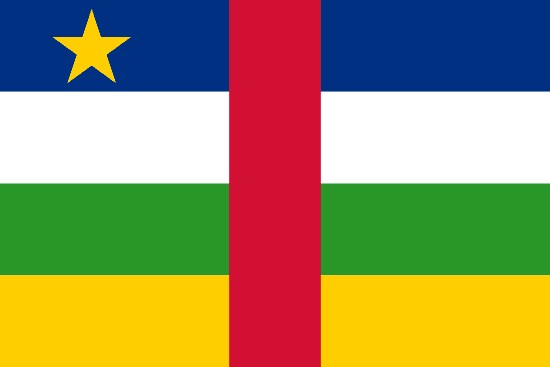"Centre de l'Afrique, cœur de la résilience | Center of Africa, heart of resilience"
About:
Birao is a city in northeastern Central African Republic, founded in the early 20th century. It was a French military outpost until 1960, when CAR gained independence. The city has been a focal point of several conflicts, including the Central African Republic Bush War (2004-2007) and the ongoing civil war since 2012. Despite the unrest, Birao remains the administrative center of Vakaga prefecture. Its economy is largely based on subsistence agriculture, with some small-scale gold mining.
When to visit:
Birao is a town located in the Vakaga prefecture of the Central African Republic, known for its rich cultural heritage and diverse wildlife. The best time to visit Birao is during the dry season, which typically runs from December to March. During this period, the weather is more pleasant with clear skies and cooler temperatures, making it ideal for exploring the town and its surrounding natural attractions. Visitors can also witness traditional festivals and cultural events that take place during this time, providing a unique insight into the local way of life.
When to avoid:
Birao, a town located in the Central African Republic, experiences its worst travel conditions during the rainy season, which typically occurs from June to October. During this time, heavy rainfall can lead to flooding, muddy roads, and potential transportation disruptions, making it challenging for tourists to navigate the area. Additionally, the increased humidity and presence of mosquitoes during the rainy season may pose health risks to visitors. As a result, travelers seeking to avoid these adverse conditions should consider planning their holiday to Birao during the dry season from November to May for a more enjoyable experience.
"Wet Season (May–October)"
Birao, Central African Republic, experiences its wettest period from May to October. During this time, average high temperatures hover around 30°C, while lows drop to around 22°C at night. Rainfall can reach up to 220mm in August, the peak of the rainy season. Cloud cover is significant, reducing sunlight hours to about 5-6 per day. Visitors can expect frequent, heavy showers, especially in the afternoon. The humidity is high, and the landscape is lush and green. Despite the rain, it's a vibrant time to experience Birao's natural beauty.
"Hot Season (April–October)"
Birao, located in the Central African Republic, experiences its warmest period from March to May. During this time, the average high temperature tends to hover around 38-40°C (100-104°F), while the average low is typically around 25°C (77°F). Rainfall is minimal during this period, with monthly averages ranging from 10 to 30mm, making it the driest part of the year.
Sunlight is abundant, with approximately 10 hours of daylight each day. Despite the intense heat, humidity levels remain relatively low, ranging from 20% to 40%. Cloudiness is also rare during this period, contributing to the high temperatures.
For a visitor, a typical day in Birao during the warmest part of the year would feel extremely hot, especially in the afternoon. The lack of cloud cover means there's little relief from the sun's rays. It's generally dry, so you won't experience much rain, but the low humidity can make the heat feel even more intense. Despite the heat, the evenings can be somewhat cooler, providing a bit of respite. It's recommended to stay hydrated and avoid strenuous outdoor activities during peak sun hours.
Language:
In Birao, a city located in the Central African Republic, the most commonly spoken languages are French and Sango. French is the official language of the country, used in government and formal education. Sango, on the other hand, is a national language, widely spoken among the population and often used in daily conversation.




